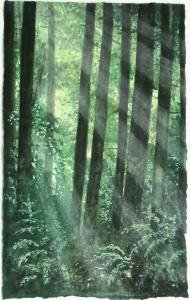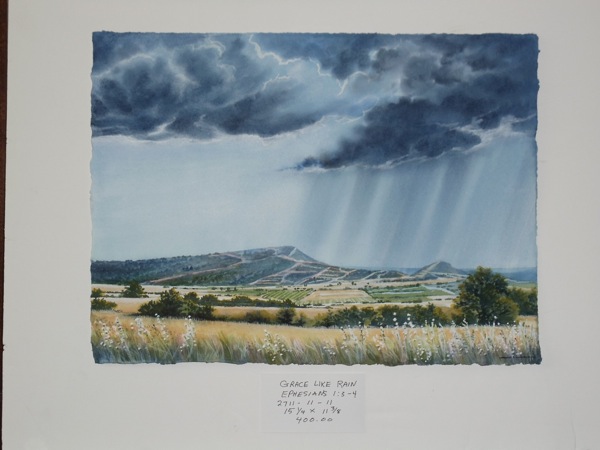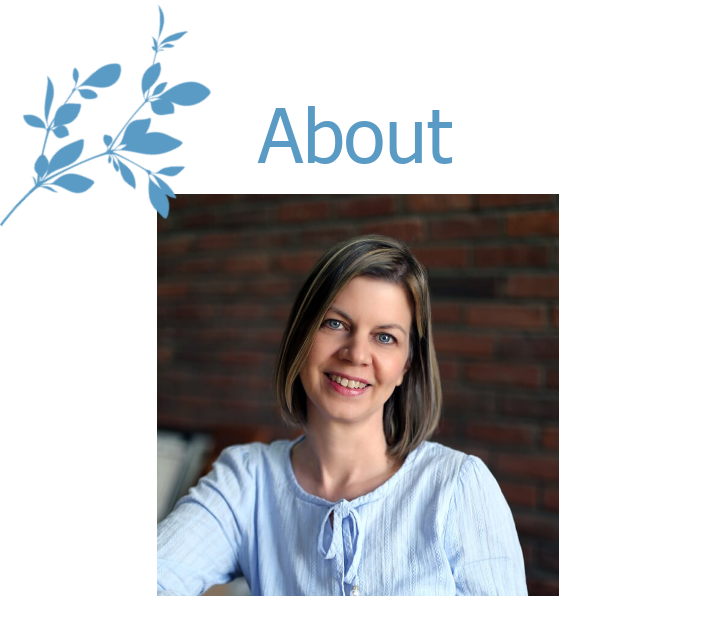{Also check out my guest post at Taylor Sky’s blog, Word Enlightenment.}
Way back in February, I gave a little peek inside After the Snow Falls, and told about the small Quebec town that inspired the fictional town of Point-du-Fleuve.
I’m thrilled to give you another peek inside today. You’re in for a treat, because I’m going to introduce you to my friend Elsie Underwood Naraine whose unique artwork is the inspiration for that of Adele in After the Snow Falls:
Here’s a brief excerpt:
Caleb ran straight to his suitcase, already packed and sitting by the chair, pulled it up onto the lower bunk and found the picture. His painting depicted a brilliant sunrise lighting up the sky, reflected below on a shimmering lake, and above against overhanging clouds. The clouds became darker and gray further away from the sun, but those close to the sun burst with splashes of radiant color–yellow, orange, pink and pale purple. It was spectacular. Like the painting on the easel, it stirred something inside her.
“Look.” He handed the picture to Celia and turned it over. Again, a small penciled inscription, Rising Sun, and another Bible reference: Isaiah 58:8. He looked up at her eagerly. “Do you know what that is?”
“I think so. Do you?”
“Yeah. It says, ‘Then the light of my blessing will shine on you like the rising sun. I will heal you quickly. I will march out ahead of you. And my glory will follow behind you and guard you.'”
Celia sat down on the lower bunk, ducking to avoid hitting her head, and stared up at him, unsure how to respond. Finally, she said, “Who taught you that?”
“Grandma. When she gave me the picture.”
“And what do those words mean, exactly? Do you know?”
“Well–” Caleb looked down at the picture. “I think it means that God will protect me and he’ll make me better–he’ll heal me.”
She held the picture, drawn by its haunting beauty, yet frustrated that her mother had apparently joined forces with her father to push this message at Caleb. She’d had no choice but to leave Caleb with them this week, but she trusted them not to pollute his mind with these ideas. Caleb didn’t deserve to be caught in conflict between her and her parents.
She sighed. “Beautiful, isn’t it.”
“Yeah.”
“I hope you thanked Grandma. It was very nice of her to paint this for you. Here.” She handed it back to him. “You’d better pack it up. Why don’t you check around under the bed and at the beach–make sure you have all your things. We’re leaving soon.”
In After the Snow Falls, Adele is Caleb’s grandmother, but in real life, Elsie Underwood Naraine is a (much younger) vibrant artist and speaker–a very busy lady–but I finally caught up with her for this interview:

When did you begin painting?
I began painting in 1979–a deal that I made with the Lord when I was 8. I had asked Him what He wanted me to do with my life and He said that I was to paint and to tell People that He loved them. I asked Him if I could wait to paint until I was 25 (I thought that all artists die if they are to become famous and I wanted to get some living in–the thoughts of children–LOL) but I promised to tell people right away that He loved them.
Do you have formal training as an artist?
No formal training although I did take a commercial Art course to supplement the lack of art taught in our rural school. The deal was that if He would teach me and instruct me then I would do it. He was in charge of marketing as well since that was not my interest in the least.
What does “painting prophetically” mean?
Painting prophetically means that when I am inspired it is coming from God’s thoughts joining with mine and it is conversation. It is relationship unfolding about His activities in my own life and the lives of others. He likes to talk about His creation and His loved ones and when I paint….He is always talking and I am generally listening. He speaks to me in colors and shapes and movement and I just record what is impressed on my spirit. The paintings carry the message and are posted like declarations into the atmosphere…of God’s intentions.
When did you begin to paint prophetically?
I began painting prophetically right away but did not understand what that meant until years later. God asked me to put scriptures on the back of each piece (discreetly) because they would prophesy to the individual or business even though they were not aware of it in. The scriptures were my inspiration. Psalm 19 was my instruction from the Lord when I asked Him what I should paint: The heavens declare the Glory of God and the earth His handiwork.

Is it ever hard to part with a painting?
It is not hard to part with the artwork since it is painted with a mission…in fact it is difficult to have then for long periods of time since they need to go to the right people at the right time and that requires that I wait for God’s timing. It is during that maturation time that I get discouraged. He still speaks to me about my life if a painting lingers. As I trust Him…they are eventually sent out. In all the years that I have been painting…33 years…there are none that have remained with me for longer than 10 years. Timing and maturation can also be more about the person receiving the painting.
Where do some of your paintings hang today?
The paintings are in so many places that I cannot recall–both private and corporate–they are in most nations and it is fun to watch how they have gone on their little journeys. My favorite project of all time was being asked to paint protocol gifts for the Israel Keneset. The Canadian Government and Israel-friendly churches joined together to commit themselves as friends and I had the honor of presenting them personally to each of them. They were told that the artist was given their names and that she prayed for each one of them personally and God gave her scripture and the painting. The Israeli ambassador at the time had tears in His eyes from being given Psalm 139. There are many stories and hopefully many more to come.
Thank you so much, Elsie, for visiting with us here.
Thank you Carey for asking me to share. Now back to the drawing board!!!




